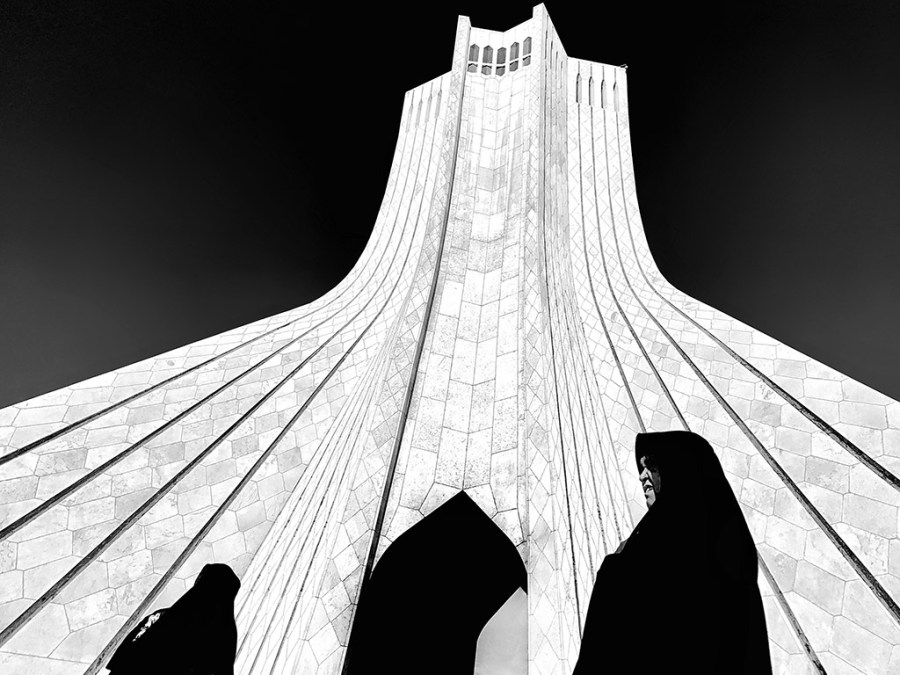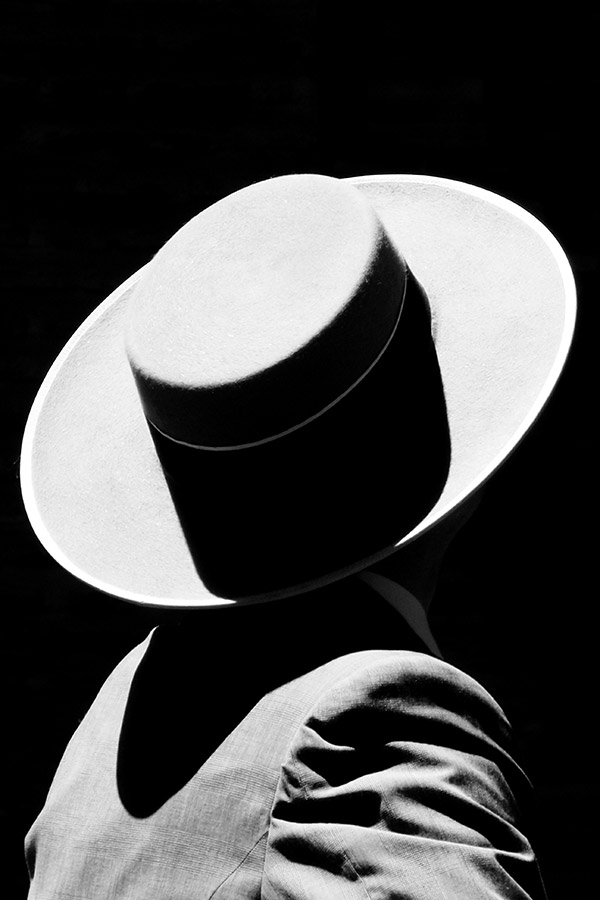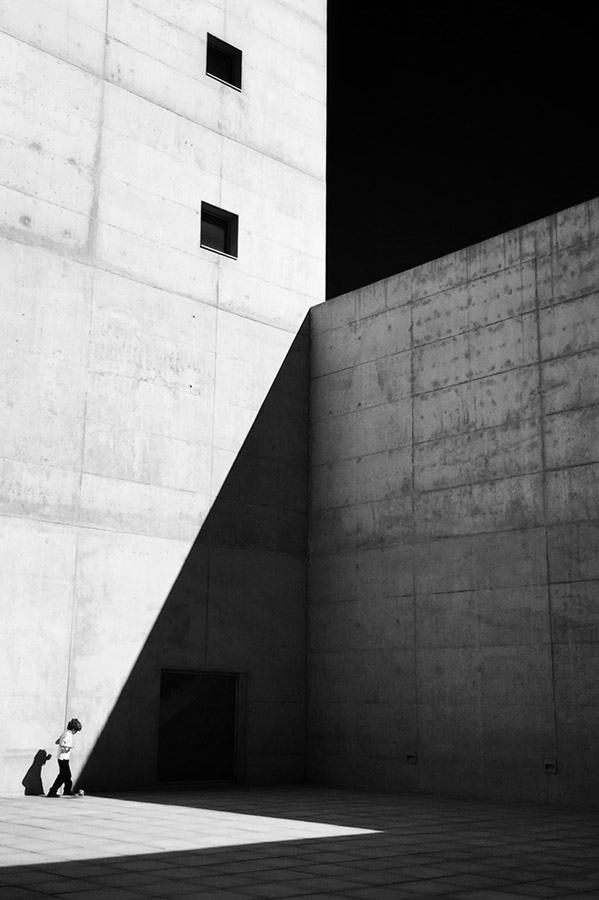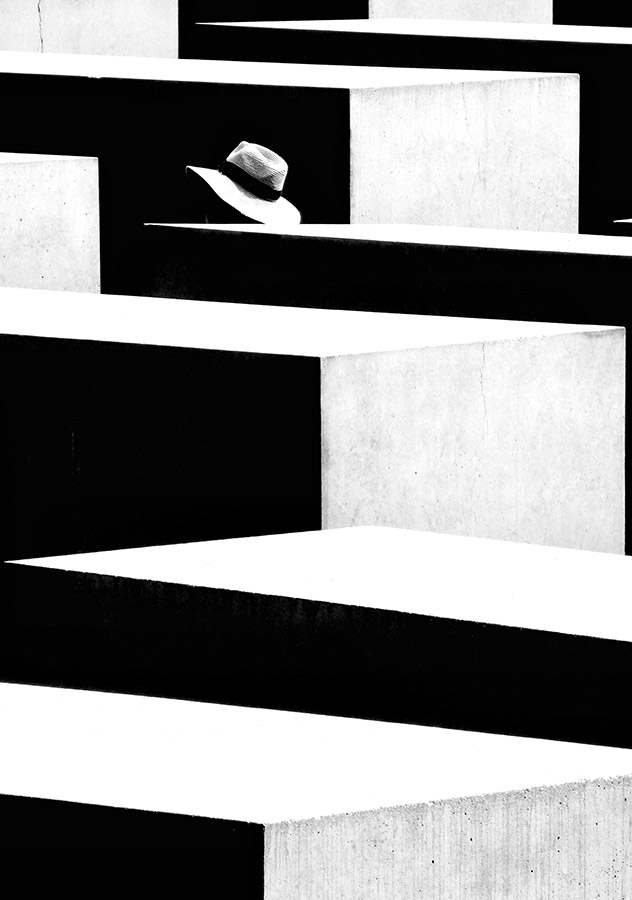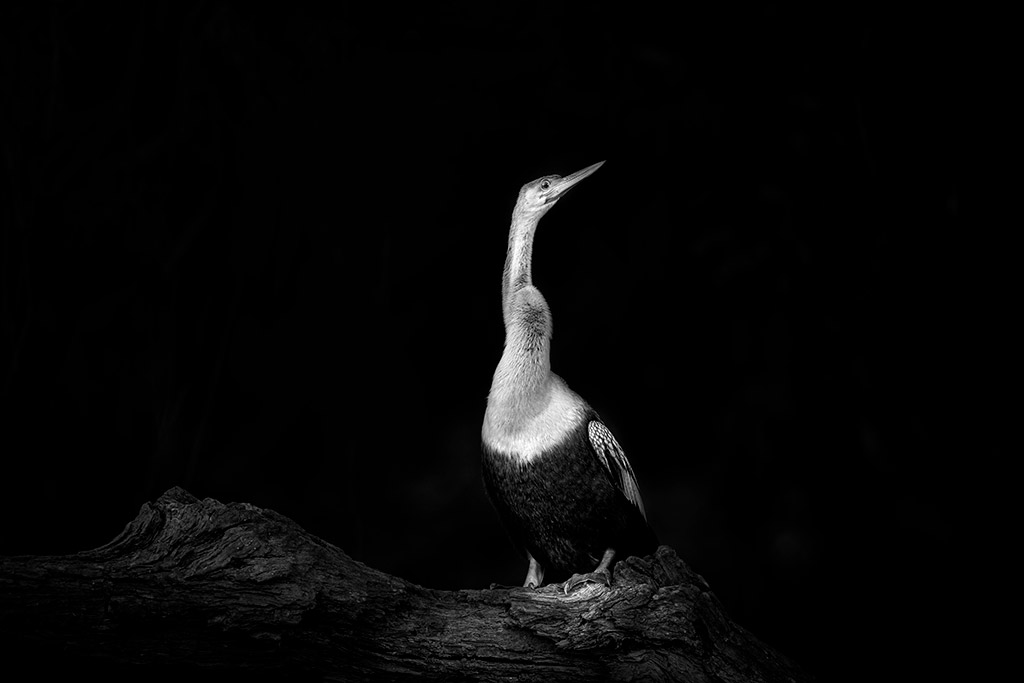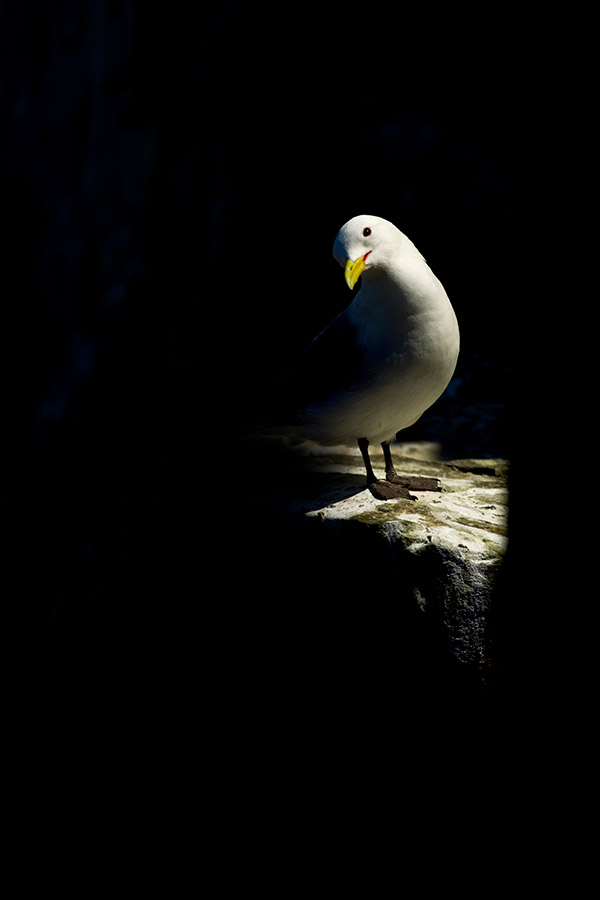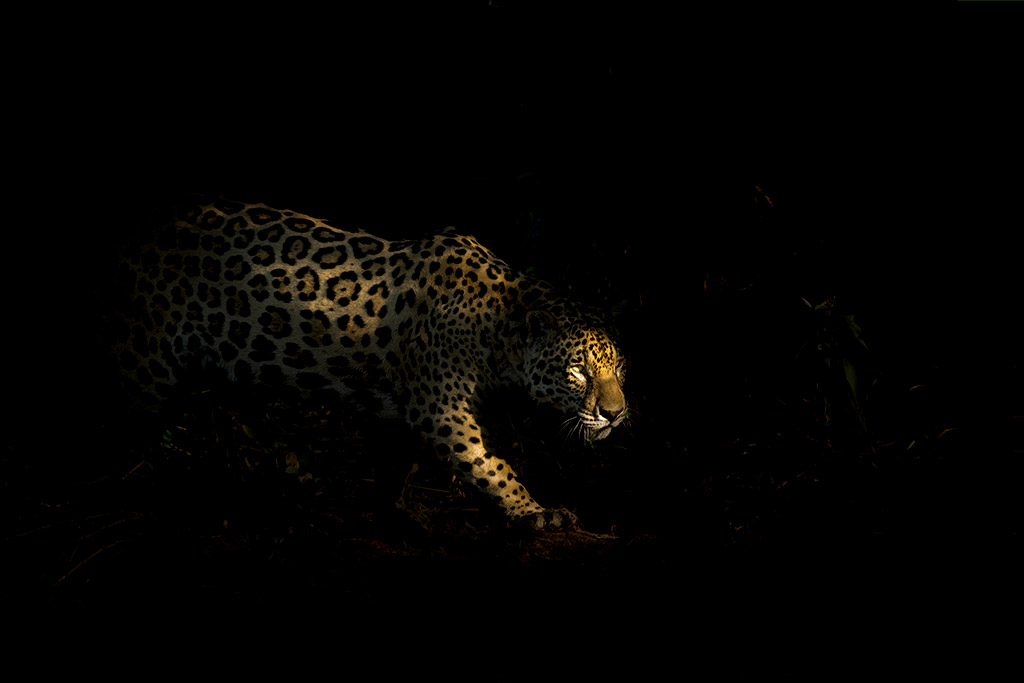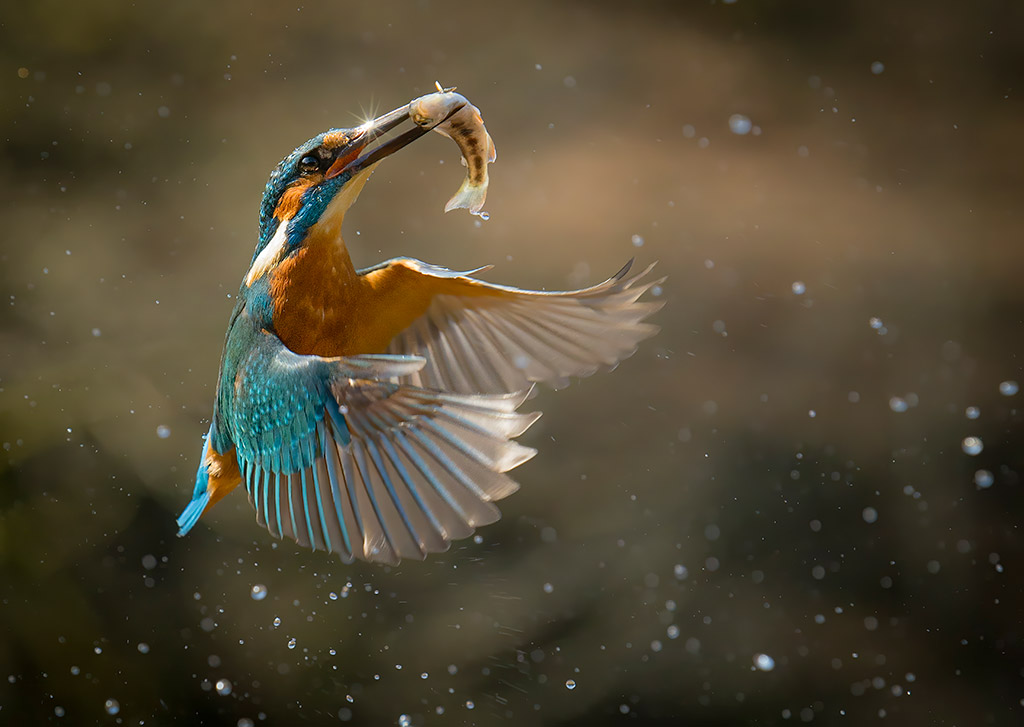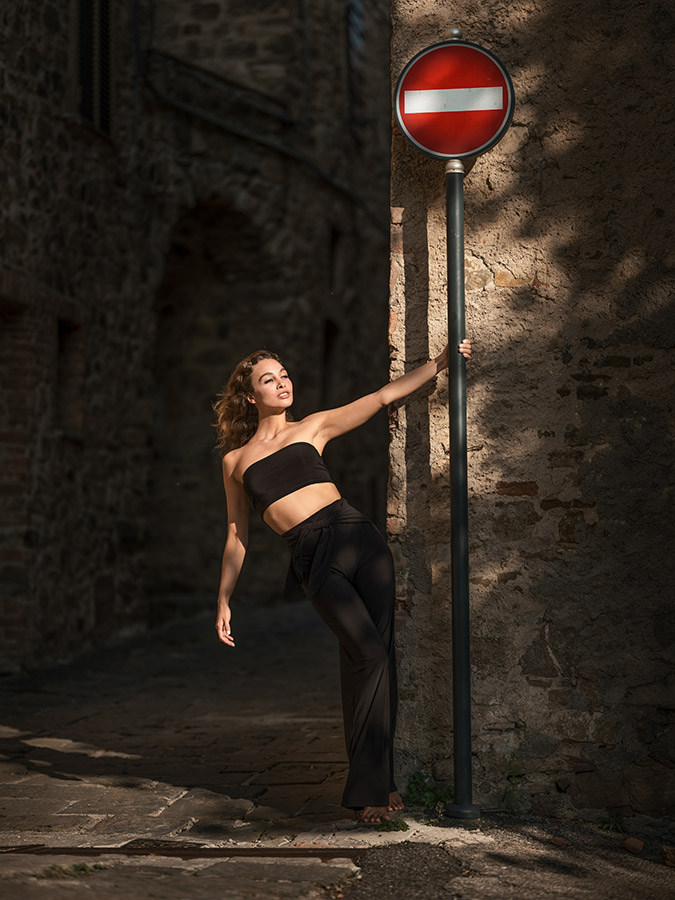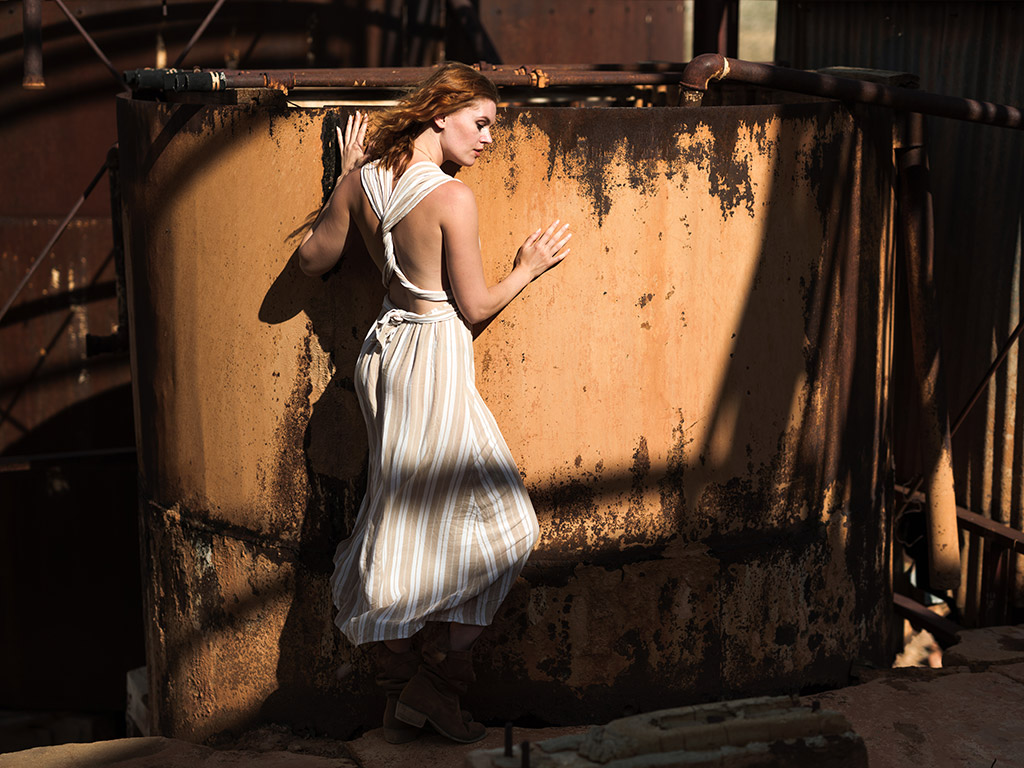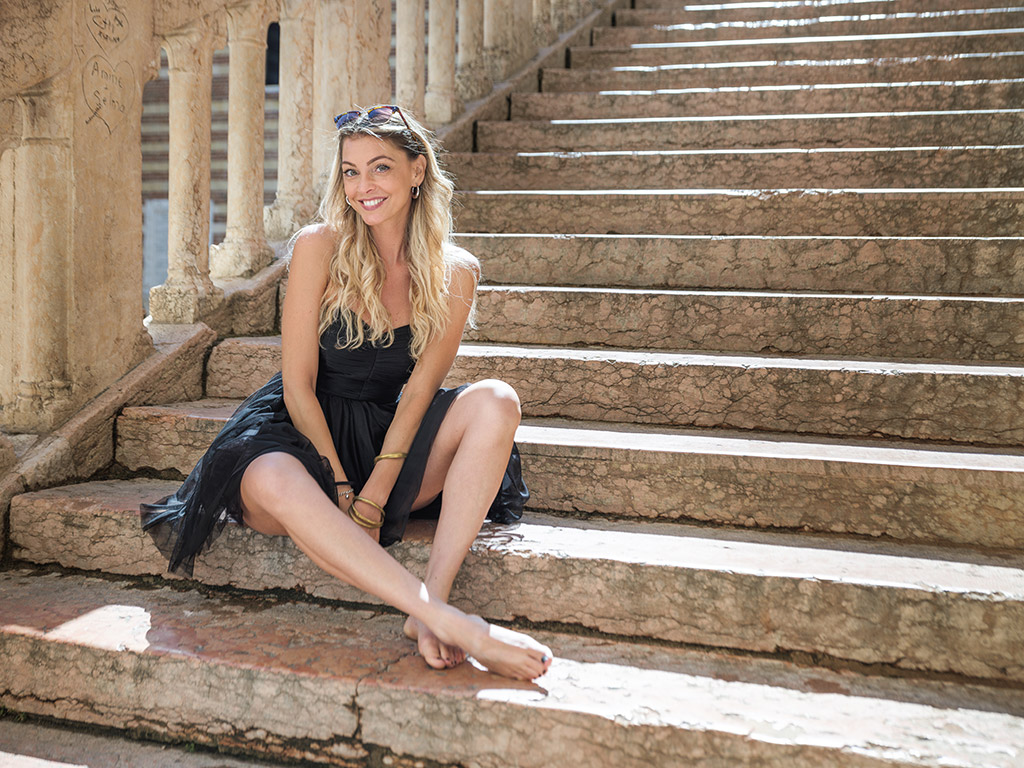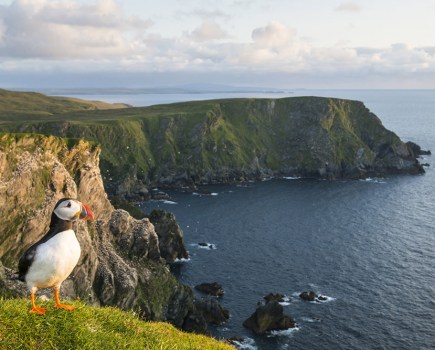When the sun is high in the sky and the light is harsh and unforgiving it’s tempting to put your camera away and go for an afternoon siesta. However, there are ways you can extend your shooting time and take advantage of the fierce midday sun. The pros show you how to photograph in strong summer light for a range of genres, including portraits.
How to shoot in harsh summer light
Strong summer light tips from Tom Mackie
I remember the days when Mr Kodak gave instructions with every roll of film to always place the sun at your back to produce correctly exposed images. While they may be correctly exposed, this would also produce flat and boring photos. It was suggested to never photograph into the sun because the strong light would be far too much for film to cope with. When handled correctly though, strong light can produce some amazing results.
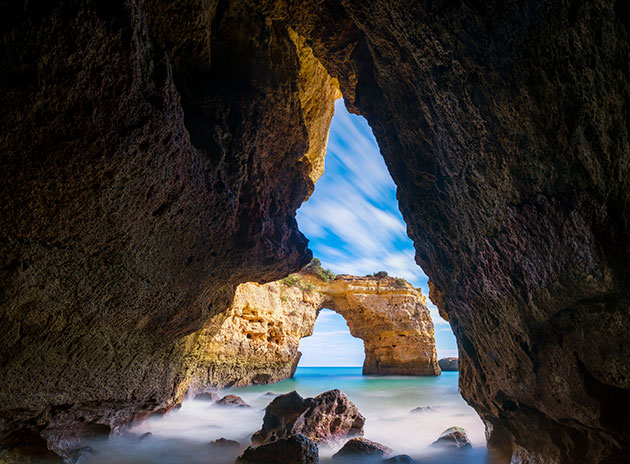
View of natural sea arch from sea cave, Praia de Albandeira, Algarve, Portugal. Nikon D850, 24-70mm, 61sec at f/14, ISO 100. Credit: Tom Mackie
Photography has come a long way since then and digital sensors are capable of handling 14 stops of light as opposed to 5 stops in the days of transparency film. Whilst the principles are the same, we have so much more control now. The key is to understand how to handle harsh lighting situations to create dramatic images.
We’ve all heard that it’s best to photograph at either ends of the day for the best light, but don’t put your camera away when the sun is high in the sky because you’ll be missing out on so many more great photo possibilities. Using a polarising filter will help to darken the blue sky and make those clouds pop out, as well as remove glare and reflections from foliage, water and buildings thus increasing colour saturation.
The bright highlights of rocky coastlines and white buildings can often run the risk of burning out in strong lighting conditions, but using a polariser will help to control the light. It’s especially useful at midday in tropical coast locations when the sun penetrates the water reflecting off a sandy ocean floor. A polariser will remove the reflections on the surface of the water allowing the turquoise colour to come through.
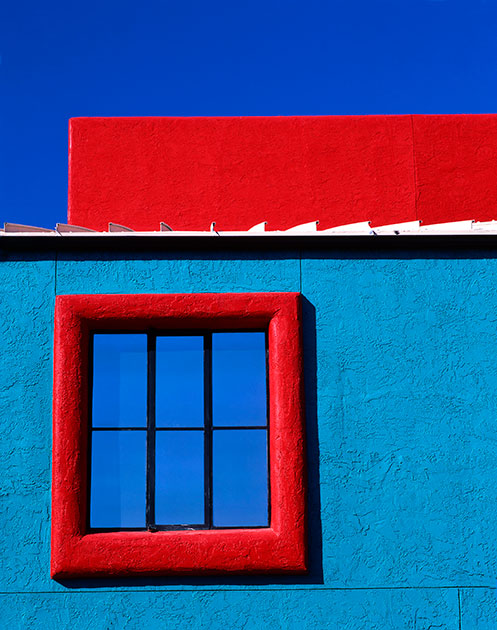
La Placita window, Tucson, Arizona, shot in the midday sun. Pentax 6×7, 200mm, 1/60sec at f/11, Fuji Velvia. Credit: Tom Mackie
I often use a polariser along with a neutral density (ND) filter, especially when photographing along the coast, in order to slow the exposure down to create a misty water effect. Of course, you’ll need to mount your camera on a tripod to execute this technique. If there are any clouds present I use a long enough exposure to get some movement in them. It’s ideal when the clouds are moving towards the camera to create an explosive sky effect emanating from the centre of the frame.
Which ND filter you use depends on the time of day. I use the LEE Super Stopper (15 stops) when the sun’s intensity is the strongest, enabling exposures of several minutes. I wouldn’t recommend using this at any other time or your exposures would be hours, if not days, long! The LEE Big Stopper (10 stops) is perfect for shooting when light levels are lower in the morning or afternoon depending on the length of exposure you desire. The LEE Little Stopper (6 stops) is great for low light or when you only need an exposure of a few seconds.
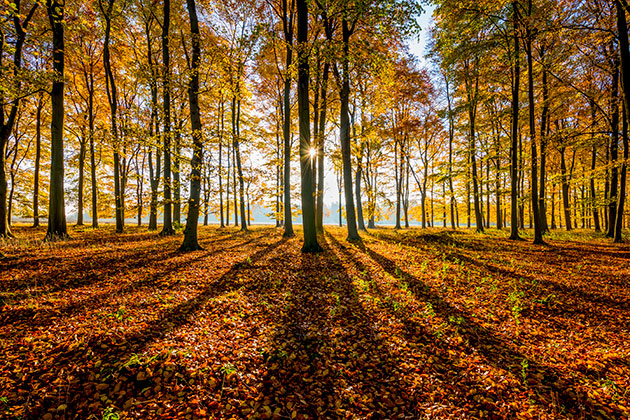
Sunburst through autumn beech trees, Thetford Forest, Norfolk, UK. Nikon D800, 14-24mm, 1/15sec at f/11, ISO 100. Credit: Tom Mackie
Silhouettes and shadows
I love photographing straight into the sun as it creates strong, graphic images. A bit of care needs to be taken though, for several reasons. First, it’s best when the sun is low in the sky. I normally try to hide the sun behind something so it’s just creeping out to create a sunburst. A wideangle focal length will work the best for this. The size of the sunburst is determined by your aperture size – f/22 will elongate the points more than, say, f/11. It’s a personal choice dependant on the effect you desire.
When the sun is low in the sky, it creates strong silhouettes, but make sure your subject has a distinctive, recognisable shape and it doesn’t merge with other elements otherwise it becomes a big, black blob. The shadows cast from your subject can often be used as a compositional tool to lead the viewer into the scene, and a wideangle lens will accomplish this for the best effect. I often use this technique in forests with tree shadows, but make sure your trees are evenly separated otherwise the composition can look too cluttered. Finally, make sure you compensate for shooting into the sun by increasing your exposure by at least 1 stop, as your camera’s meter will want to underexpose the image.

Cloudscape over Callanish Stones, Isle of Lewis, Outer Hebrides, Scotland, UK. Nikon D800, 24-70mm, 138sec at f/16, ISO 100. Credit: Tom Mackie
Make it monochrome
I always say, ‘If you don’t have the light, make it black & white.’ But even when the sun is high you can create images with impact. When there isn’t any distraction from colour, the scene relies on line, shape, texture, light and shadow. I switch my camera display to monochrome – in the settings under picture control or style – so I can see how the tones will work in black & white. Then I process the raw file in Nik’s Silver Efex Pro 2.
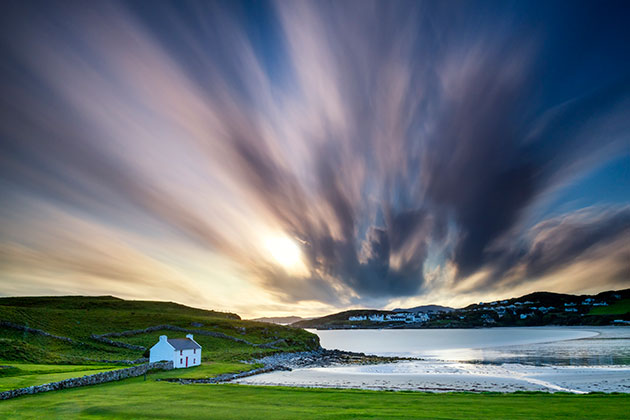
Cottage by the bay, County Donegal, Ireland. Nikon D850, 24-70mm, 567sec at f/18, ISO 200. Credit: Tom Mackie
HDR for extremes
When lighting conditions are extremely harsh, it can be difficult to cope with the wide exposure latitudes presented by the scene. One way to combat this is to create multiple images, exposing for the highlights, midtones and shadows and then combine them using Lightroom or the processing software of your choice.
As I use the Nikon D850 with its wide latitude sensor, I find that I seldom need to do this as I can control the exposure range of a strongly lit scene by exposing for the highlights and then lighten the shadows in post processing. So the next time you are confronted with harsh lighting, either at home or away, keep your camera at the ready and consider trying some of these simple techniques to create images with instant impact.
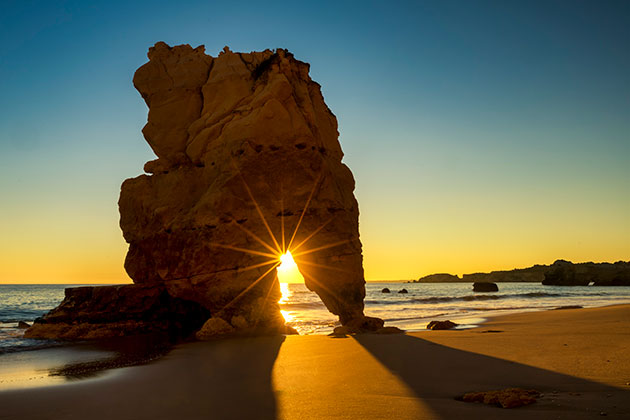
Credit: Tom Mackie
Photography in harsh summer light kit list
- Tripod: It’s essential to mount your camera on a sturdy tripod when using long exposures with ND filters, and when making multiple exposures for blending HDRs. It will also improve your photography overall.
- Filter holder: A filter holder is needed to properly attach a Neutral Density filter for creating long exposures. The LEE holder will allow a polarising filter and an ND filter to be used together, which can be useful.
- ND filter: A Neutral Density filter will allow long exposures in harsh lighting conditions by reducing the light that reaches the sensor. These filters come in various densities ranging from 1 to 15 stops. See more of the best filters.
- Polariser: A polariser helps to reduce the glare that harsh light produces on subjects, and increase the saturation to make colours pop. It will also remove reflections on water surfaces to allow the colour to come through.
- Wide-angle lens: A wide-angle lens is essential for landscape photographers. It allows you to include more of your subject, and to use strong shadows and clouds as compositional aids.
About Tom Mackie:
Tom Mackie has pursued a lifelong career as a landscape photographer and is one of the world’s leading practitioners of the art. His work is featured in a number of books including The World’s Top Photographers: Landscape. Tom leads workshops in the UK and abroad.
Black & White photos in strong summer light
Strong summer light tips from José Luis Barcia Fernández:
Strip away the colour
The absence of colour allows you to focus on the subject, prioritising lines, shapes and composition. Situations that go unnoticed in colour can work beautifully in black & white. Stripping away colour is an effective way to deal with harsh, midday sun, but that doesn’t mean you can use it to rescue a poor shot. To shoot black & white in-camera, set your device to monochrome mode and make use of the greyscale preview on the LCD screen. If you don’t want to lose colour info, shoot raw and produce different versions in post-production.
Embrace contrast
You can use contrast to highlight the simplicity and visual strength of a composition. Strong, directional light will help to enhance lines and shapes in the frame, creating a dramatic and evocative atmosphere. In harsh light conditions use a fast shutter speed with a narrow aperture and low ISO. This will result in sharp images that emphasise both close and distant details.
Become a minimalist
Less is more. For this type of photography, it’s essential to simplify distracting or unnecessary elements and focus attention on the subject and the composition. You can use backlighting to turn your subject into a silhouette or use negative space to balance the composition and highlight the focal point. With the right choice and arrangement of visual elements, you can convey different emotions and moods, evoking various sensations in the viewer.
Practice makes perfect
To my mind, a picture is successful when it conveys a specific narrative or evokes emotions in the viewer, regardless of the parameters or camera used. There are no shortcuts, just practice. Knowledge of your tools is essential, and it’s also important to experiment in different situations with various settings and techniques.
Practise your geometry
Contemporary architecture, monuments, stairs and bridges often have geometric lines and patterns that can result in striking compositions. You can use lines and shapes to direct the viewer’s gaze and create a sense of balance in your picture. Diagonals and dynamic symmetries are especially effective. Alternatively, forget about the rules of composition and play around – the results might surprise you.
Strong summer light tips for black & white photos from Tracy Calder:
Don’t be afraid of the dark
For some photographers, shadows are something to be eliminated or ‘lifted’, but when they are used sensitively (and intentionally) they can direct a viewer’s gaze, create mystery, describe form, emphasise texture and even add beauty to a composition. To truly appreciate their worth, read the 1933 essay In Praise of Shadows by Junichiro Tanizaki.
Don’t be insensitive
Not all shadows are equal. When used insensitively – think bags under a model’s eyes or ugly shapes created by the use of on-camera flash – they can destroy a picture. Assess whether shadows add value or create unwelcome distractions.
Stay for the day
The angle and intensity of sunlight will change depending on the seasons, the weather conditions and time of day. (During the winter solstice, for example, the noon sun is the lowest it will be all year.) If you have time, spend a day in one location and watch how shadows shift and morph. Pay attention to areas of transition from light to dark: are these soft and gradual or hard and sudden?
Make shadows the subject
Shadows can become the subject of an image. For this to work you need a shadow with a clear outline and a clear purpose. Are you trying to create an abstract image that balances shapes, lines and space, for example, or are you trying to show the delicate nature of a plant? A shadow by itself isn’t always that interesting, but a shadow positioned with a clear purpose is much more likely to result in a successful picture.
Best kit for black & white shooting in strong summer light
- Inspiring art: Rembrandt knew exactly how to balance shadows and light, and film director FW Murnau knew how to use them to create suspense and mystery. Naturally, there are plenty of photographers who have used shadows to brilliant effect: Paul Strand, Edward Weston and Robert Adams, for example. Look to the art of others for inspiration.
- Leica M11 Monochrom: If you’re serious about black & white (and you’ve got £8,000 to spare) the Leica M11 Monochrom, with its black & white BSI CMOS sensor, is hard to beat. The M11 offers 60 million pixels, an ISO that can be raised to 200,000 and excellent build quality.
- The Photographer’s Ephemeris: If you want to see where the light will fall on the land, day or night, for any location on earth, The Photographer’s Ephemeris app might well be the answer. This app is designed for photographers working with natural light and provides information about sunlight, moonlight and starlight.
José Luis Barcia Fernández

José started taking pictures with an iPhone in 2011, and it soon became his preferred tool for creative expression. He has a degree in chemistry and works as a logistics coordinator for an international distribution company. In his spare time, he can be found photographing street scenes and architecture. Based in Spain, but with a passion for travel, his work has been exhibited widely, and has appeared in numerous high-profile titles including The Washington Post, The Guardian and GQ.
To see more visit lensculture.com/joseluisbarcia and @joseluisbarcia
Nature photography in strong summer light
Nature strong summer light tips from Ben Hall:
Convert to black & white
Shooting during midday sun will result in high-contrast images. Highlights will be bright, and shadows will be dark, often making it difficult to render fine detail visible. Monochrome images rely on shape, form and texture to work. You might find that converting a high-contrast image to black & white will transform your image, revealing interesting textures, and eliminating the washed-out colour that can occur when a subject is lit from above.
Search for dark backgrounds
Looking for a dark background to place your subject against can be a great way of adding a sense of drama and getting rid of unwanted distractions. Expose for your subject and let the background fall into deep shadow to simplify the image and add a feeling of mystery.
Experiment with exposure
Often, the key to a successful wildlife image lies in its simplicity. The shadows that are created during harsh sunlight can distract the eye, and the subject can easily become lost in the background. Reducing exposure by dialling in some negative exposure compensation can be an effective way of eliminating distractions and drawing the viewer’s eye straight to the subject.
Expose to the right
Midday sun creates deep shadows. Keep your histogram to the right to ensure that you are capturing the maximum detail possible in the shadow areas. You will notice that by doing this you will end up with a larger file size due to the extra information that is being recorded.
Nature strong summer light tips from Tracy Calder:
Create your own clouds
Using a portable diffuser will soften harsh sunlight and reduce areas of contrast, much like a cloud. Placing it between the sun and your subject will reduce shadows and create a more flattering light, which can be great for wildlife (as well as humans!). If you want to eliminate shadows, try using a reflector to bounce light into dimly lit areas.
Focus on small details
Wildlife shots including the wider landscape or environment might lack impact in the midday light, so consider moving in close and concentrating on animals in smaller environments where you can control or shape the light.
Check for blown highlights
If you’re relying on cloud cover to temporarily diffuse the light be aware that, depending on the size of the cloud, the area behind your subject might still be in bright light, making it harder to balance the exposure. Try to exclude bright areas where possible – check for any blown highlights using the ‘highlights’ alert on your camera.
Play around with white balance
The white balance settings on digital cameras tend to be pretty accurate – there’s usually one for direct sunlight (with a colour temperature of around 5,000 Kelvin). But you can get some interesting results by not matching the white balance setting to the prevailing light. Using the shade setting will warm everything up, while the tungsten setting will add a cool, blueish tone. This technique can be a bit hit-and-miss, so play around with WB when post-processing, rather than in the field.
Best kit for strong summer light nature photography
- Diffusers and reflectors: A diffuser is useful for softening light and reducing contrast, while a reflector helps to reveal detail in shadow areas. You can purchase reflectors with various surfaces, such as gold and silver, which will add warmth or add coolness. The Interfit 5-in1 Reflector covers all eventualities.
- Wimberley Ground Plamp: If you’re shooting close-up subjects, and you need to use a reflector or diffuser to control the light, you might want to invest in a Wimberley Ground Plamp. This articulating arm can hold a multitude of useful objects, and the stake end can be firmly pushed into the ground.
- Protective measures: Looking after your equipment in harsh sunlight is one thing, but it’s easy to get distracted and forget to look after yourself. A good sunhat is a must, as are plenty of fluids and snacks. Stay in the shade as much as possible, wear sunscreen and regularly reapply it.
Ben Hall

Ben Hall has gained worldwide recognition as one of Britain’s leading professional wildlife photographers. His images are often surprising, always striking and ever striving to awaken people to the diversity of the natural world. He is driven by the need to protect and preserve Britain’s fragile ecosystems, as testified by his work for the RSPB, various Wildlife Trusts and other conservation organisations. All of Ben’s pictures are true representations of what he saw, nothing is added, which is an important part of his philosophy. To see more visit benhallphotography.com and @benhallphotography
How to take Portraits in strong summer light
Strong summer light tips for portraits from Damien Lovegrove:
Don’t overlook the ordinary
Locations that might look dull in the shade can really come alive in bright sunlight. The tones, patterns and textures found in old industrial areas, for example, provide plenty of opportunities for portraits. Spend less time looking and more time seeing when you are scouting out locations.
Look for dappled light
Dappled light is a favourite of mine and including a strong graphic element like a ‘no entry’ sign can add an interesting narrative to a portrait. It’s tempting to avoid street furniture but embracing it can provide opportunities for creativity.
Include the sky
I usually like to keep the sky out of my pictures – it can lack detail and colour in bright sunlight – but in this instance I ditched the tripod and got the camera almost down to sand level. Leaving the sky in adds to the bright, airy feel I was after.
Use architecture
Harsh sunlight can lead to dramatic results when it breaks through gaps in city buildings. Match it to sculptural tailoring and strong make-up for a seriously bold look. Shadows on surrounding walls can be used to add interest.
Shoot into the sun
I love to shoot into the sun, and cities provide excellent opportunities for finding strong geometric backgrounds, which seem to suit these conditions. When shooting into the light it’s important to use a lens hood to avoid flare.
Strong summer light tips for portraits from Tracy Calder
Become a sun worshipper
Harsh sunlight is often avoided by portrait photographers because it creates shadows, and it highlights blemishes, wrinkles and pores. To soften the skin you can use wide apertures, but, if you do, you will need to focus carefully. Alternatively, embrace the shadows and contrast – ask your subject to move around while you observe how the shapes created by the light shift and change.
Look around you
If you don’t have a portable V-Flat reflector to hand, look around you for a large white surface that could be used to bounce light back onto your subject. A white wall will do the job, or even the side of a van or a marque. Move your subject closer or further away from the surface and note how the effect changes.
Strike a pose
To create a flattering portrait in unflattering light, you’ll need to pose your subject appropriately. Adopt a slightly high vantage point and ask them to tilt their chin towards the sun (you can fill in shadows with a gold reflector). If the background exposure is vastly different to your subject, you’ll need to balance this out using off-camera flash. Alternatively, look for locations where the background and foreground exposure are similar.
Manual mode
The best way to obtain natural-looking results in harsh sunlight is to shoot in manual mode. If you don’t, chances are your camera will try to overcompensate for all the bright light in the frame and lean towards underexposure. You need to properly expose for the skin, so switch to spot metering, and overexpose a few stops.
Portrait kit for strong summer light photos
- Matte makeup: Harsh, midday sun can cause skin to appear oily and highlight texture, so ask your subject to wear matte makeup if possible and bring along a pack of oil blotting papers. It’s also worth considering waterproof eyeliners and mascaras and finishing the look with setting spray.
- Diffusion umbrella: If you want to convert direct sunlight into a softer, broader source then consider positioning a white diffusion umbrella over your subject. When the sun hits the umbrella, it will spread out and become instantly more flattering.
- Foldable V-Flat reflector: Ideal for reflecting or blocking light on location or in the studio, foldable V-Flat reflectors usually consist of foam panels with one side black and the other side white. (They can also be used as a backdrop if the area behind your subject is particularly distracting or messy.)
Damien Lovegrove

Damien is a photographer best known for his location and studio portraits. He finished taking on client commissions in 2018 and now concentrates on personal work, workshops and teaching videos. Damien is based in the UK but travels the world in search of amazing locations to make pictures. He shares these global travels with likeminded photographers who crave beautiful life experiences on a Lovegrove adventure. To see more, visit lovegrovephotography.com
For more guidance on mastering summer light read here.
Related reading:
Follow AP on Facebook, Twitter, Instagram, YouTube and TikTok.

